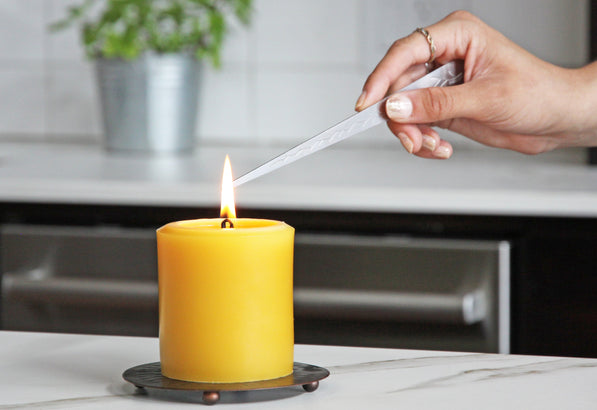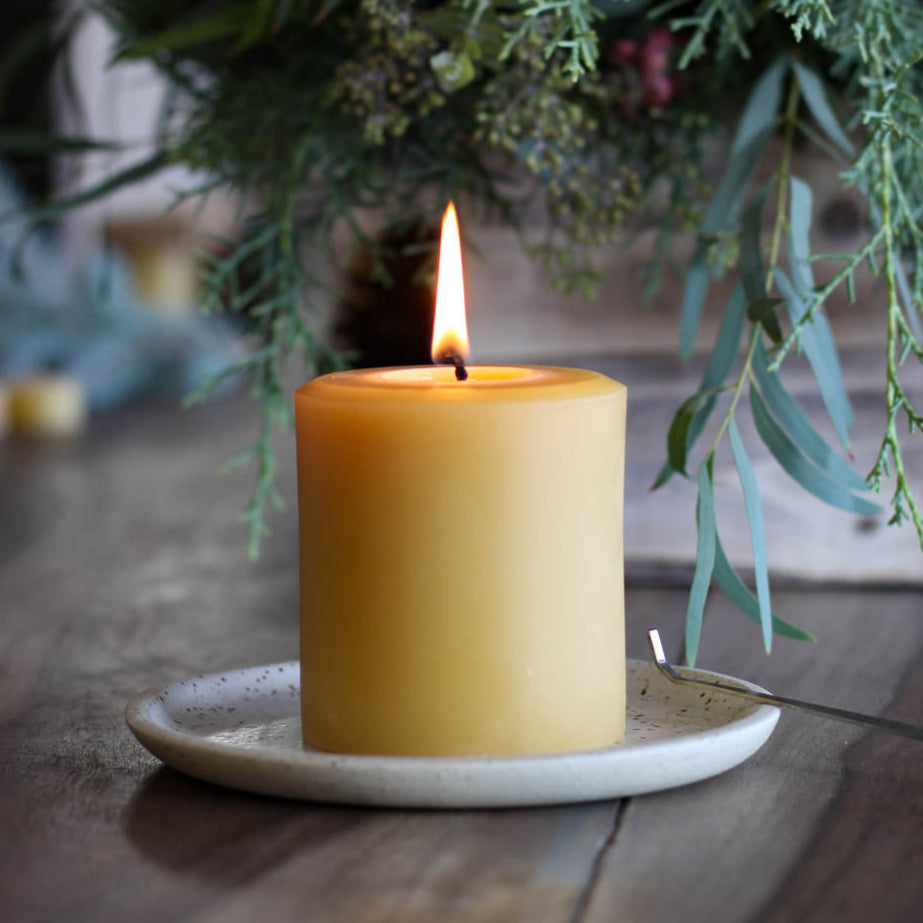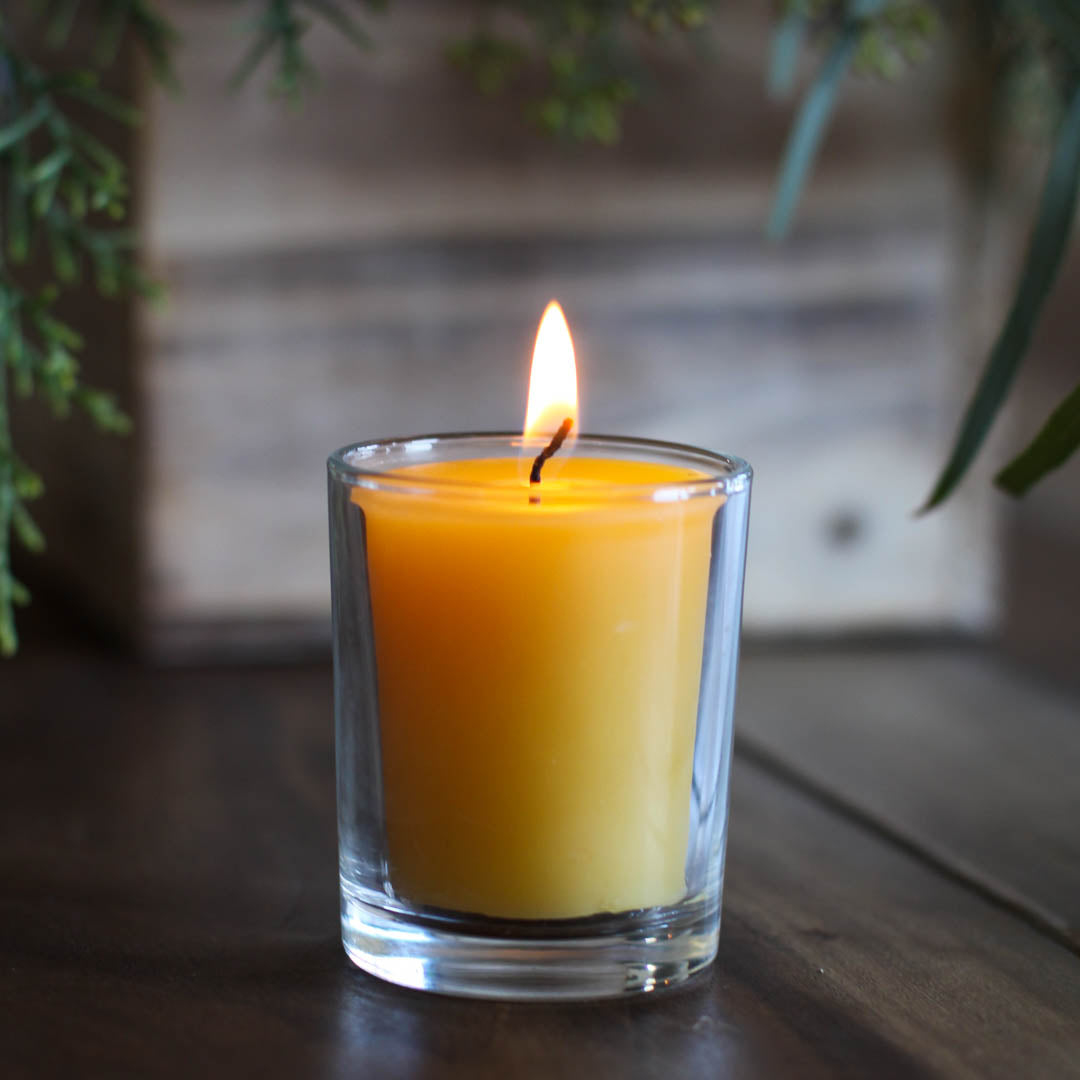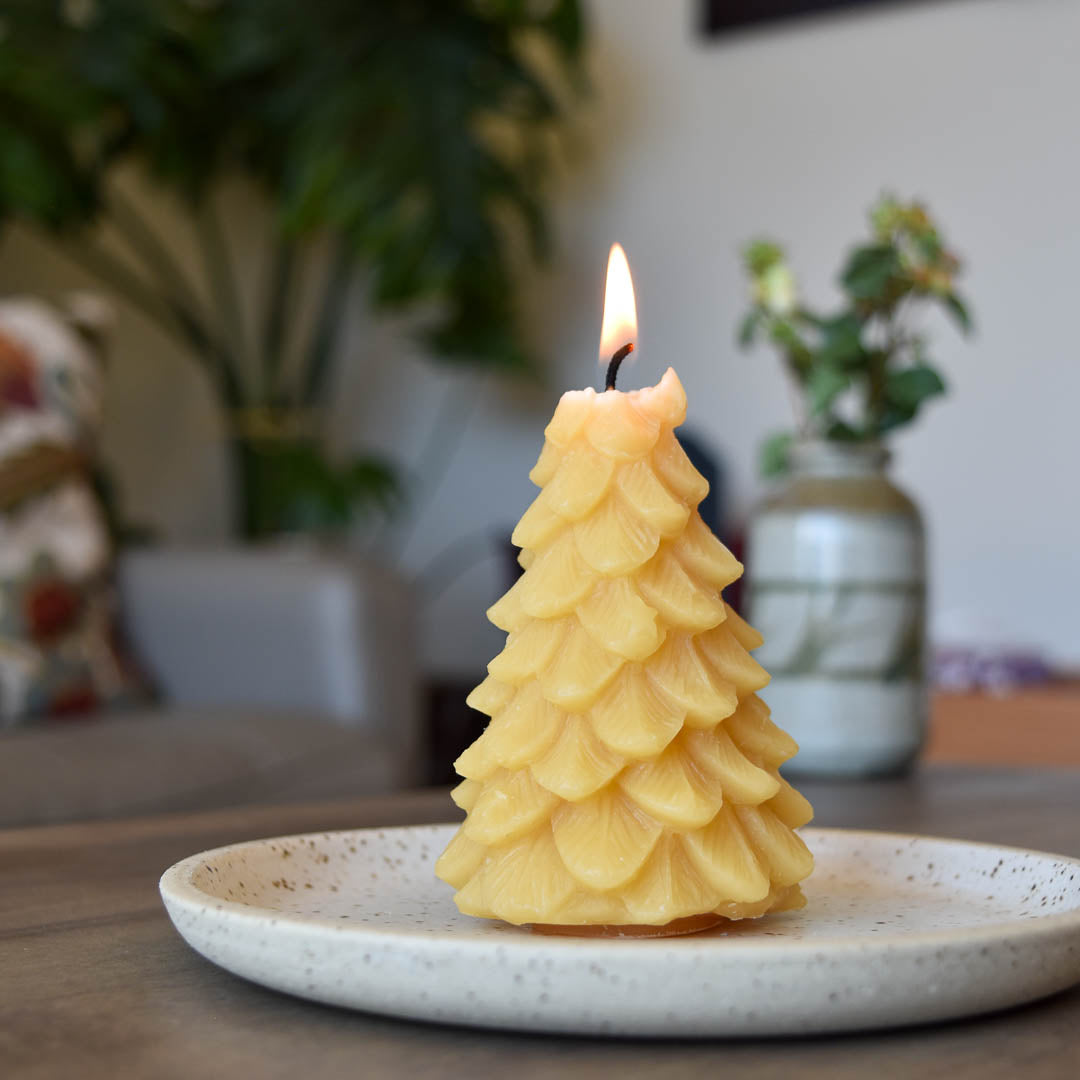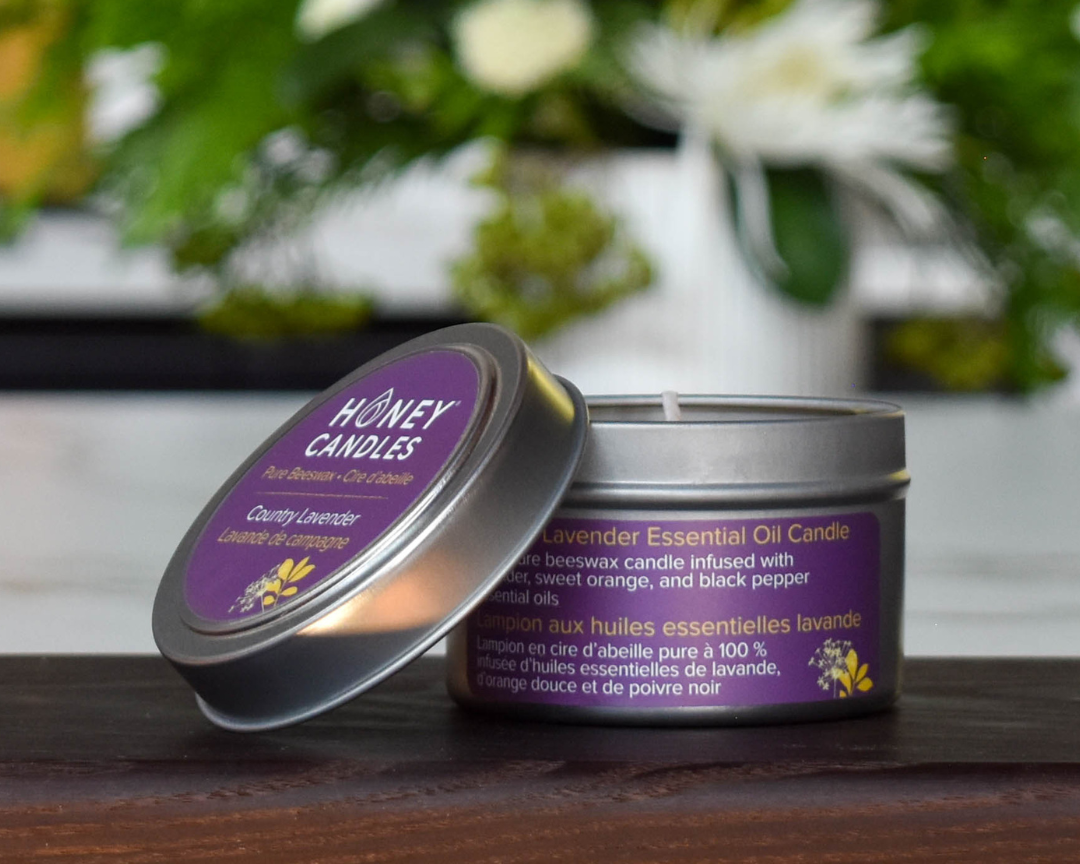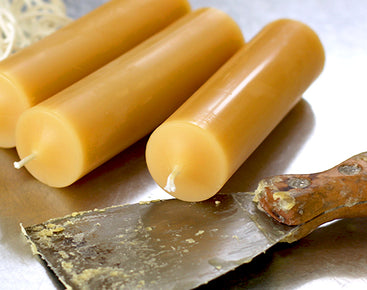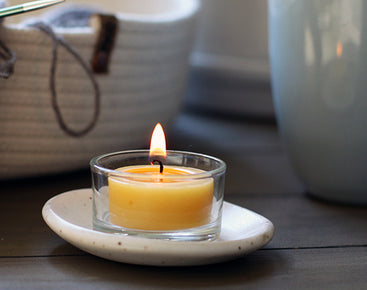Get Set
Some candles require that the wick is trimmed before lighting. If the wick is left too long the flame will likely flicker and smoke. However, a wick that is too short can also be problematic causing candlesticks to drip and votives, tins, and tealights to leave unconsumed wax.
Candlestick wicks should be trimmed no shorter than a half inch. Pillars and ornamentals should be trimmed to no shorter than a quarter inch. The wicks of votives and tealights do NOT need to be trimmed before lighting.
Choose an appropriate holder or plate for your candle and always burn candles in a draft free environment. Candles should be out of the reach of pets and children and should never be left unsupervised.
For more tips on choosing and burning specific candles check out our article "Choosing a Candle"
It Starts with a Spark
Your candle is prepped and you’re ready to go. Whether you use a match, a lighter, or a twig from the fire that you started with your grandfather’s old flint - remember it is best to light the candle at the base of the wick rather than the tip to get the wax flowing.
Maintain the Flame
Under most conditions our candles are virtually dripless. All candles are sensitive to air movement and may start to flicker and smoke if exposed to drafts. When a flame flickers, the candle may drip. If your candle drips, extinguish it, remove it from any drafts, and relight it. Forced air furnaces, ceiling fans and quick movements around the candle all create drafts.
Depending on the type of candle you are burning, you may have to trim the wick periodically. Extinguish your candle and trim the wick if:
- The flame is flickering and/or smoking
- The flame is large and looses its teardrop shape
- A carbon cap develops
- The wax pool gets too close to the edge of the candle
Keep it Clean
You should never leave matches or trimmed pieces of wick in the candle. The debris can act like an additional wick causing your candle to burn too hot. A flame that is close to the edge can also cause wax to spill out and run down your candle making a mess.
The Grande Finale
Extinguish Pillars and larger diameter candles by dunking the wick into the melted wax and straightening it again. Make sure to center the wick for an even burn. This eliminates smoking and guarantees an easy relight. Wick Dippers are the perfect tool for the job but you can also improvise using an unbent paperclip or something similar!
Candlesticks, Votives, and Tealights should be snuffed out with a smokeless Wick Snuffer. If tealights are extinguished when they are less than half consumed then they may not burn completely upon relighting.
Cleaning Candle Holders
To remove the leftover tab and wax from glass votive and tealight cups we are big fans of what we have affectionately dubbed the “freeze and whack” method. Simply freeze the cup for a few hours and then use an old butter knife to firmly tap the metal tab on the bottom of the cup. It should pop out in a satisfying way along with any leftover wax. Wash the cup with warm soapy water.
The easiest way to remove beeswax from your holder is to place it in the freezer for a few hours. Once removed from the freezer simply chip the wax off and wash with warm soapy water. Always burn candles on or in appropriate holders.
Getting Beeswax Out of Fabric
If you spill on fabric, place the item in the freezer until it hardens and you can chip it off. You can also cover both sides of the fabric with paper towel and press a warm iron over the spill and repeat until the wax is absorbed.

